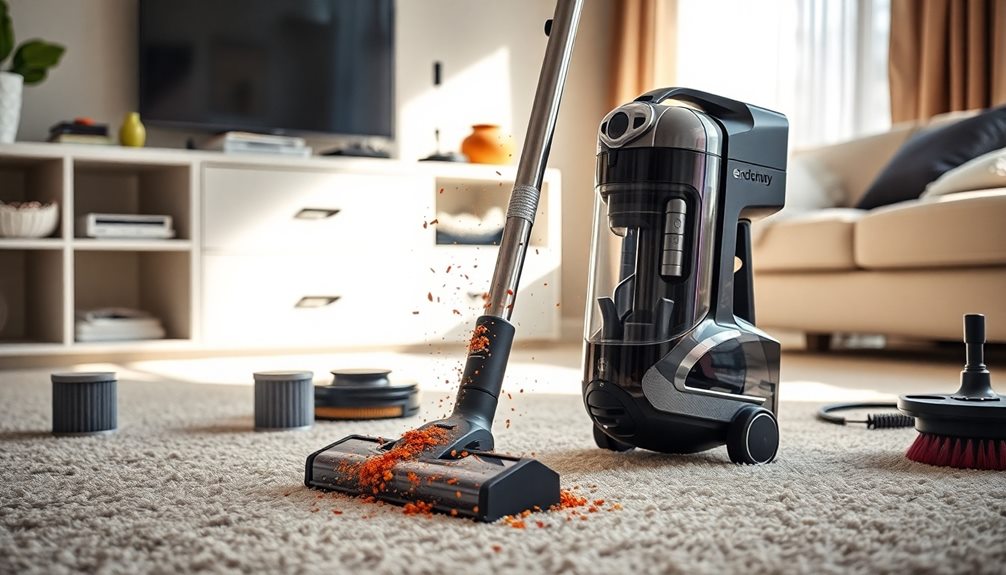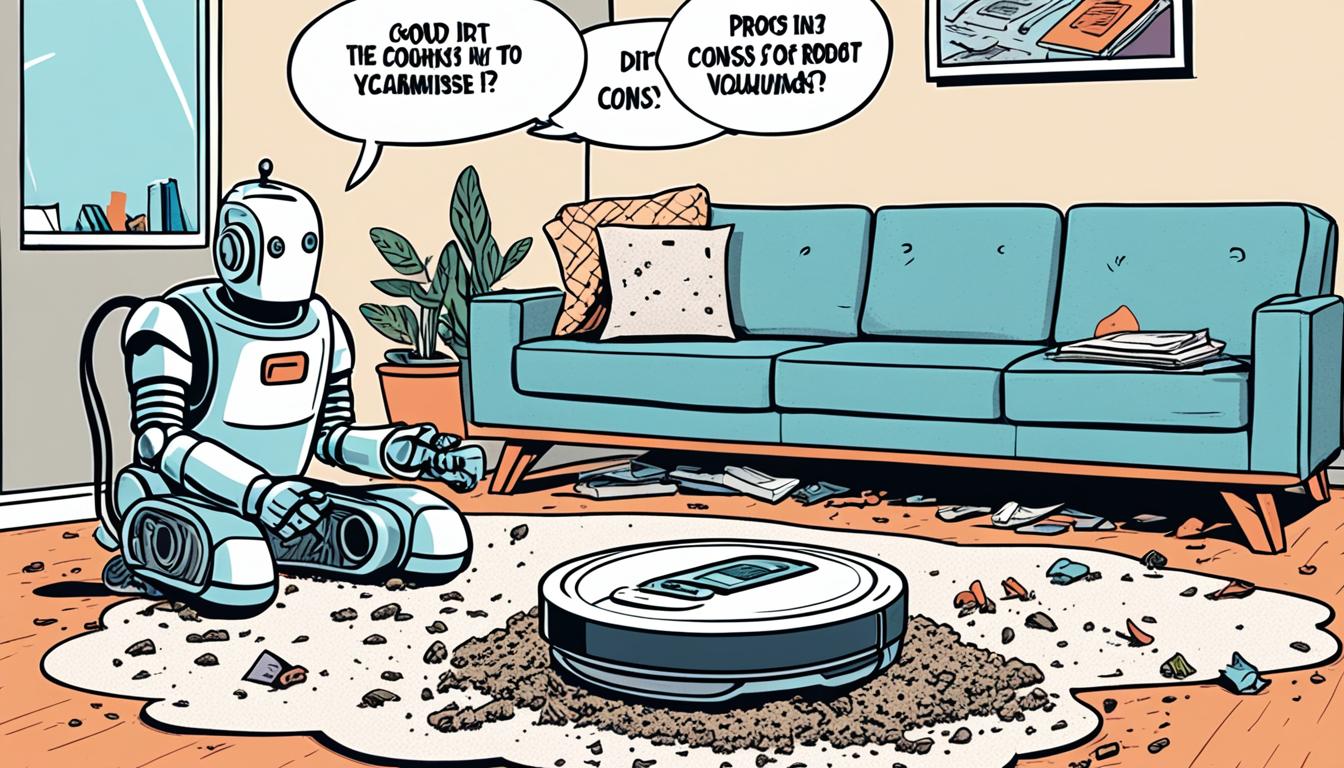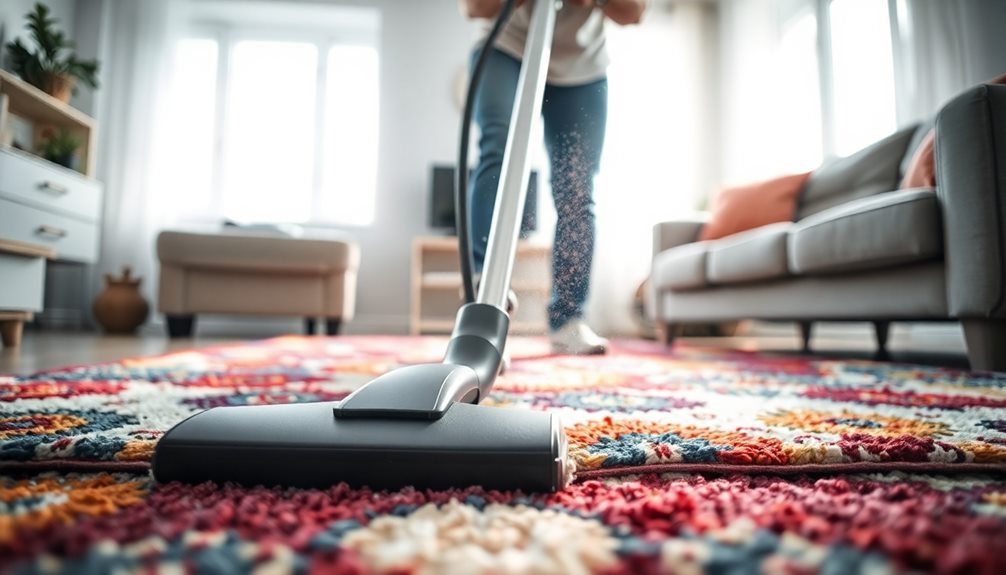To use and maintain your vacuum cleaner, start by adjusting the nozzle height based on your flooring type for effective cleaning. Regularly check for blockages in the hose and beater bar to keep airflow strong. Change bags or empty bins frequently to prevent suction loss. Clean the beater bar and roller brush monthly, removing any tangled hair. Don't forget to wash filters every three months and replace them annually. Store your vacuum in a dry area, ensuring all components are attached. By following these tips, you can enhance your vacuum's performance—there's much more you can discover about ideal care!
Key Takeaways
- Regularly inspect for blockages in the intake, exhaust, and hose to ensure efficient airflow and prevent motor strain.
- Change vacuum bags weekly or empty bin-style vacuums after each use for optimal suction power.
- Clean beater bars and roller brushes monthly to remove hair and debris, replacing them if damaged.
- Maintain filters by cleaning washable ones every three months and replacing HEPA filters annually for better airflow.
- Store the vacuum in a dry location, ensuring it's unplugged and components are securely attached to prevent damage.
Blockage Inspection
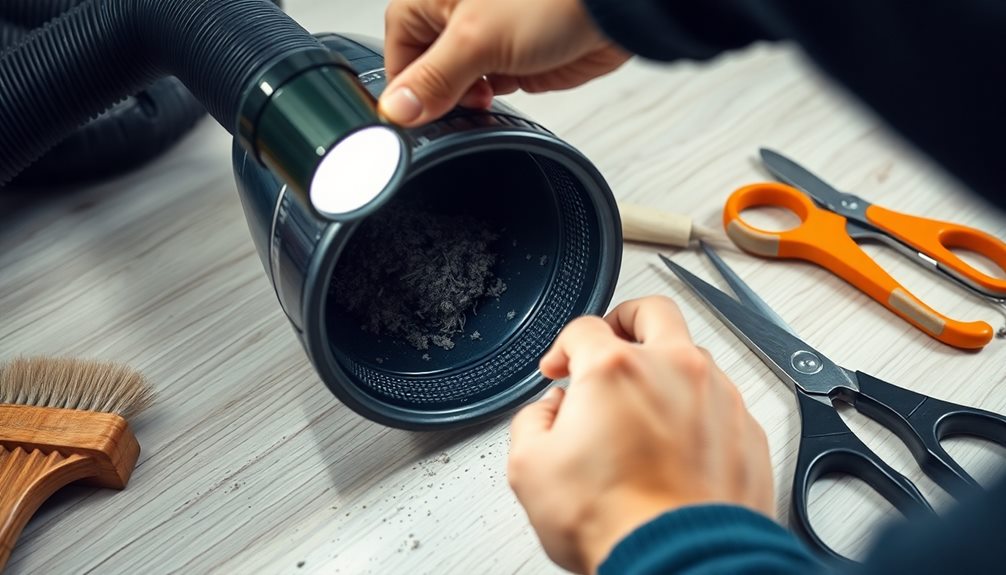
When it comes to using your vacuum cleaner effectively, regular blockage inspection is key to maintaining its performance. To guarantee ideal suction and efficiency, you should frequently check the intake, exhaust, wand, hose, and beater bar for any clogs. Blockages can markedly hinder your vacuum's capability, and if left unattended, they can lead to overheating or even motor damage.
During your inspection, pay close attention to airflow paths. If you notice any dust, hair, or debris obstructing airflow, remove it promptly. This simple step can prevent further issues and help maintain consistent cleaning power. It's essential to address blockages immediately, as they can put additional strain on the motor.
After completing your inspection, verify all components are clear and properly assembled. This confirms that your vacuum operates effectively.
Regular blockage inspection not only enhances cleaning performance but also prolongs the life of your vacuum cleaner. By making this a part of your cleaning routine, you'll enjoy better results and save yourself from costly repairs down the line.
Bag and Bin Maintenance

Proper bag and bin maintenance is essential for keeping your vacuum cleaner running smoothly and efficiently. By taking care of your vacuum bags and bin-style vacuums, you can prevent damage and guarantee peak performance.
Regular maintenance can also extend the lifespan of your vacuum, much like how best vacuum models enhance overall cleaning effectiveness. Here are some key maintenance tips:
- Change vacuum bags weekly to maintain suction; replace them when they're 70-80% full.
- Empty bin-style vacuums after each use to prevent clogs and keep airflow efficient.
- Rinse bins with water as needed, making sure they're completely dry before reinstalling to avoid moisture-related issues.
- Regularly inspect bags and bins for signs of damage or wear; full or damaged bags can lead to overheating and motor damage.
- Keep bags and bins clean to maintain strong suction and guarantee your vacuum operates at its best.
Beater Bar Care
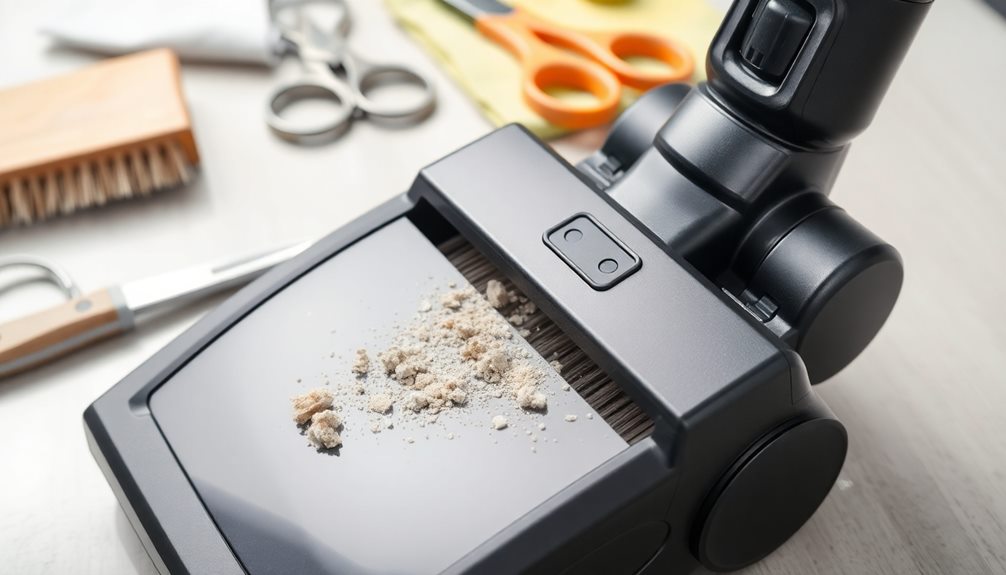
Maintaining the beater bar is just as important as caring for your vacuum bags and bins. This vital component helps lift dirt and debris, guaranteeing your vacuum operates effectively.
Regularly inspect the beater bar for hair and fiber accumulation, as this debris can hinder its performance and strain the vacuum's motor. If you notice any tangled materials, use scissors or a seam ripper to carefully cut them away, allowing the bristles to operate freely.
To maintain brush effectiveness, clean the beater bar every month. This routine prevents buildup that can lead to reduced suction and performance.
Additionally, keep an eye out for signs of wear or damage, like frayed bristles or cracks. If you spot these issues, replace the beater bar promptly to guarantee peak cleaning efficiency.
Neglecting the beater bar can result in severe buildup, potentially damaging the nozzle housing and leading to costly repairs.
Filter Maintenance
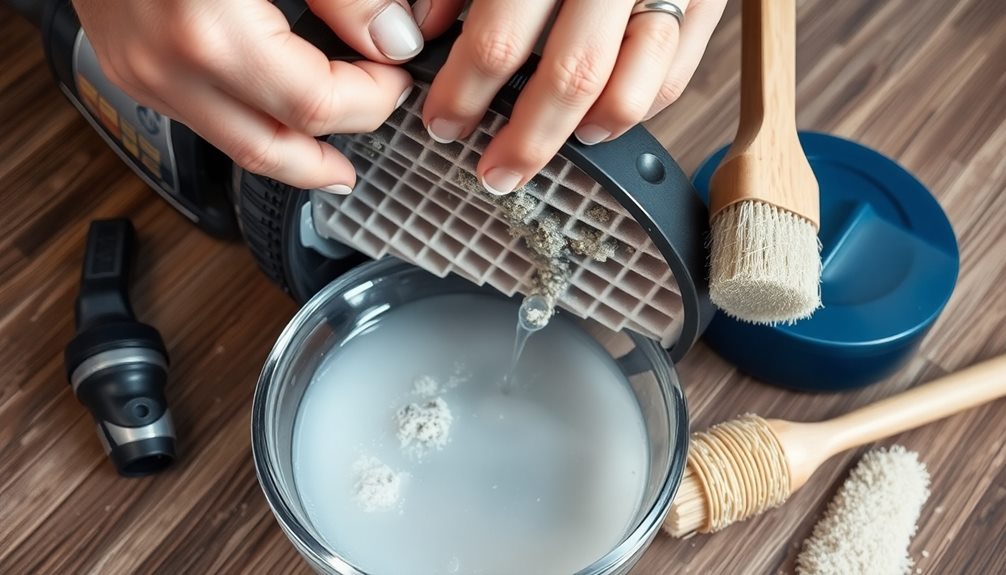
Keeping your vacuum's filters clean is essential for ideal performance. You should follow specific cleaning frequency guidelines and know when to replace your filters to avoid reduced suction.
Regular maintenance not only extends your vacuum's lifespan but also improves the air quality in your home.
Cleaning Frequency Guidelines
Regularly cleaning your vacuum cleaner's filters is crucial for maintaining its performance and longevity. By adhering to a cleaning schedule, you can guarantee your vacuum operates efficiently and effectively, preventing issues down the line.
For those looking to enhance their cleaning routine, investing in a vacuum with a high-quality filtration system can greatly improve dust removal and air quality in your home, especially if you have allergies or pets, as highlighted in Best HEPA Filter Vacuums of 2024.
Here are some guidelines for various types of filters:
- Washable filters: Clean every 3 months. If you use your vacuum heavily, consider cleaning every 6 months. Light users can wait 2-3 years.
- HEPA filters: Replace annually, especially in homes with pets, to control allergens and maintain air quality.
- Disposable filters: Check for dirtiness and replace according to the manufacturer's recommendations, typically every 20 bag changes.
- Inspect regularly: Regular checks can improve airflow and suction power, keeping your vacuum from overheating.
- Replace the brush: Don't forget to replace the brush when it's worn out; a clean brush is just as essential for peak performance.
Neglecting these filter maintenance tasks can lead to reduced vacuum lifespan and increased mechanical issues.
Filter Replacement Indicators
Recognizing when to replace or clean your vacuum cleaner's filters can greatly enhance its performance. Many vacuum cleaners come with a bag indicator light that signals when it's time for filter maintenance. Paying attention to this light helps you keep your vacuum running efficiently.
It's a good practice to check your filters after every 20 bag changes. Regular checks can prevent clogs and maintain airflow and suction power.
Depending on your vacuum's usage, washable filters should generally be cleaned every three months, while disposable filters may need to be replaced every six months to annually.
Neglecting filter maintenance can lead to reduced vacuum lifespan, as clogged filters impede airflow and can lead to overheating.
Always consult your manufacturer's recommendations for specific schedules on when to replace filters, as this can vary by model.
Benefits of Clean Filters
Clean filters play an essential role in enhancing your vacuum cleaner's performance. When you keep your filters clean, you improve airflow and suction power, which leads to more effective dirt pickup. Neglecting filter maintenance, on the other hand, can shorten your vacuum's lifespan and increase the risk of motor burnout.
Here are some key benefits of maintaining clean filters:
- Improved airflow: Guarantees your vacuum operates efficiently.
- Enhanced suction power: Maximizes dirt pickup for a deeper clean.
- Longer vacuum lifespan: Reduces wear and tear on the motor.
- Fewer clogs: Regular cleaning minimizes the risk of blockages.
- Better air quality: Prevents allergen recirculation with clean filters.
To maintain peak vacuum performance, wash washable filters every three months. HEPA filters need special attention, so check them regularly.
It's also a good practice to clean your filters after every 20 bag changes. If you notice excessively dirty or torn filters, be sure to replace filters promptly.
General Care and Storage

Maintaining your vacuum cleaner's performance relies heavily on proper care and storage practices. To guarantee your vacuum stays in top shape, store it in a temperate, dry location. This prevents damage to the belt and other components, avoiding environments that can lead to brittleness or corrosion. Always unplug your vacuum and store it safely to prevent accidental use.
Regularly clean your vacuum attachments with a mild detergent and a damp cloth at least once a month. This helps maintain their effectiveness and prevents dirt buildup. Additionally, inspect the vacuum's exterior for signs of wear and tear, cleaning off any dust or debris to maintain functionality.
Before storing, check that all components are securely attached and in good condition. This step is essential for peak performance when you next use the vacuum.
Here's a quick reference table for general care and storage:
| Care Tips | Frequency | Purpose |
|---|---|---|
| Clean attachments | Monthly | Maintain effectiveness |
| Inspect exterior | Monthly | Guarantee functionality |
| Store properly | After each use | Prevent accidental use |
Change Your Vacuum's Belt
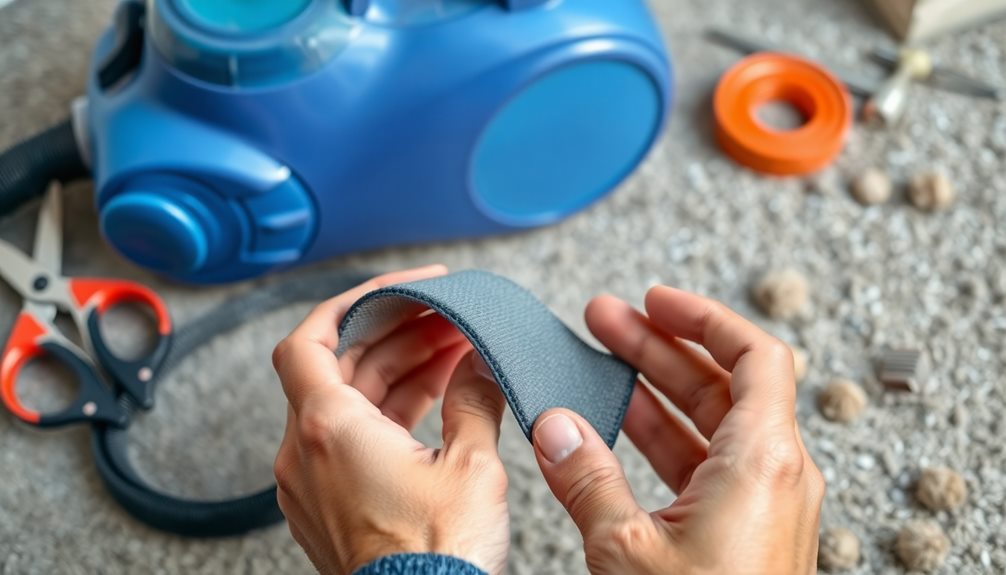
Proper storage and regular maintenance set the stage for effective vacuum performance, but even with the best care, some parts will eventually need attention.
One vital part to monitor is the drive belt. Over time, vacuum belts stretch and wear out, leading to diminished suction and a brush roll that may not spin properly. It's recommended to change the vacuum belt annually, or sooner if you notice signs of wear. A worn belt can't only reduce cleaning effectiveness but also cause potential damage to the vacuum motor if left unaddressed.
To keep your vacuum running smoothly, follow these tips for changing the drive belt:
- Inspect the belt regularly for brittleness, cracks, or looseness.
- Refer to the manufacturer's instructions for your specific model.
- Remove the cleaner head or baseplate to access the belt.
- Replace the belt with a new one that matches your vacuum model.
- Test the vacuum after replacing to confirm the brush roll spins correctly.
Clean the Roller Brush
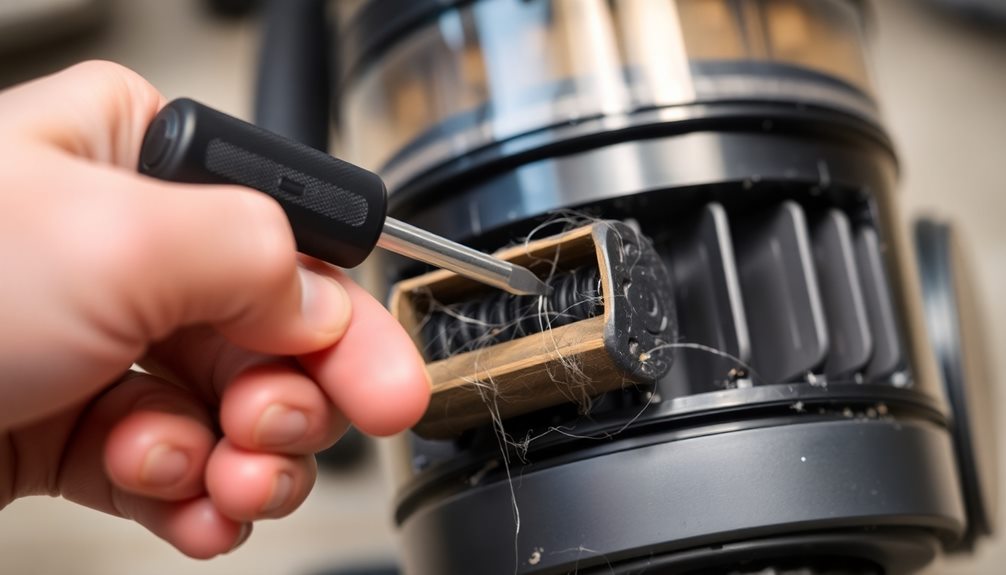
Keeping your vacuum's roller brush free of debris is essential for ensuring it picks up dirt effectively. Regularly check the roller brush for hair, string, and dirt buildup that can hinder its performance. To start, unplug the vacuum for safety before you begin cleaning.
Here's a quick guide to help you:
| Step | Action |
|---|---|
| Inspect | Check for hair, dirt, and debris. |
| Cut | Use scissors or a seam ripper to cut tangled materials. |
| Remove | Take out the roller brush every 2-3 months for thorough cleaning. |
| Replace | If you see frayed bristles or damage, replace the roller brush. |
Monitor Vacuum Performance
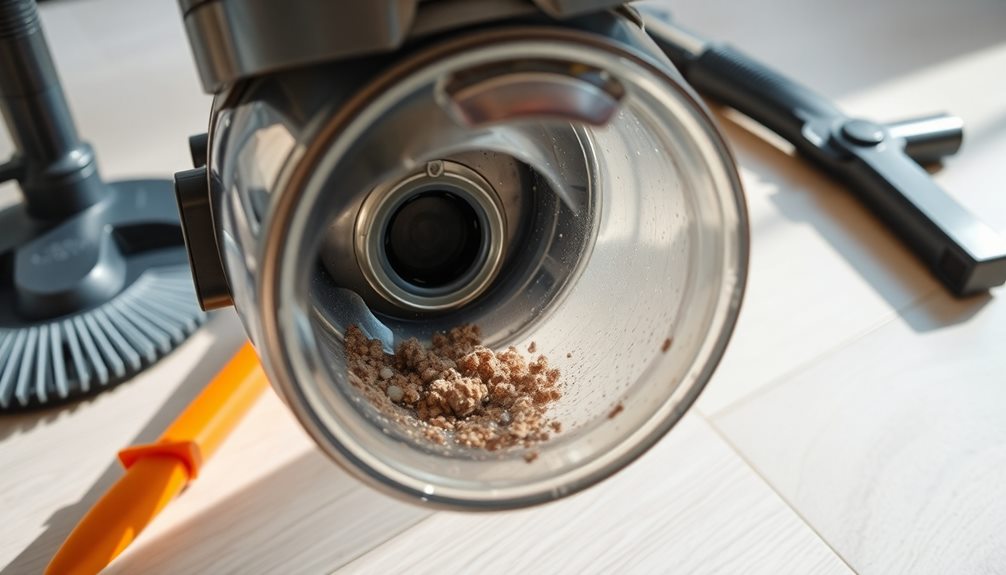
To guarantee your vacuum cleaner operates at its best, regularly monitoring its performance is essential.
By keeping a close eye on its functionality, you can verify optimum cleaning performance and extend its lifespan.
Here are some key aspects to check:
- Suction Power: Regularly observe the suction; a decrease may mean a clogged filter, full bag, or hose blockage.
- Unusual Smells or Sounds: Pay attention to any strange noises or odors during operation, as these can indicate overheating or other mechanical issues.
- Post-Use Checks: After each use, monitor the vacuum's performance to confirm it effectively picks up dirt and debris, adjusting your maintenance schedule based on how often you use it.
- Roller Brush Inspection: Frequently check the roller brush for hair or string buildup, which can hinder its movement and efficiency.
- Maintenance Schedule: Keep track of regular upkeep; neglecting maintenance can lead to reduced performance and costly repairs.
Proper Nozzle Height Adjustment
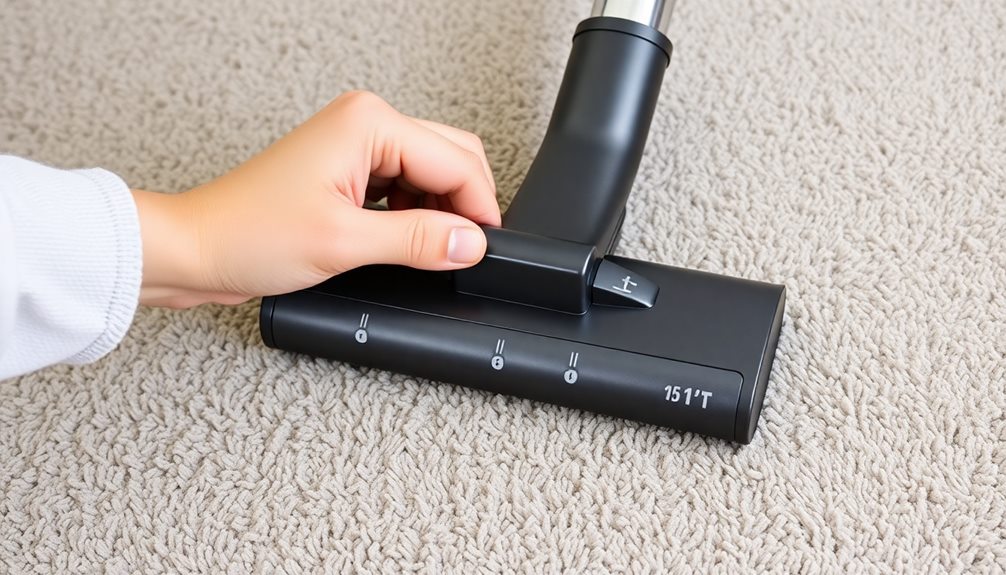
Adjusting your vacuum cleaner's nozzle height is essential for effective cleaning and maintaining your carpets.
If the nozzle is set too low, it can damage your flooring and hinder airflow, making it harder for the vacuum to pick up dirt.
To get the best performance, make sure to adjust the height according to the type of flooring you're cleaning.
Importance of Proper Height
The importance of proper nozzle height adjustment in your vacuum cleaner can't be overstated. A well-set nozzle height directly impacts your cleaning efficiency, especially across various carpet types. When the nozzle height is correctly adjusted, it guarantees ideal airflow and suction power, which means a more effective clean.
Here are some key reasons to maintain the right nozzle height:
- Prevents Carpet Damage: Setting the nozzle too low can pull on carpet fibers, leading to premature wear and fraying.
- Enhances Dirt Removal: A properly adjusted nozzle should lightly touch the carpet bristles, maximizing dirt extraction without excessive pressure.
- Improves Performance: Regular adjustments based on carpet thickness can considerably enhance your vacuum's overall performance.
- Extends Lifespan: Both your vacuum and flooring can last longer with proper nozzle height settings, reducing wear and tear.
- Adapts to Mixed Flooring: Most vacuums provide multiple height options, allowing you to customize performance for different surfaces.
Adjusting for Floor Types
When it comes to vacuuming different floor types, adjusting the nozzle height can make all the difference in cleaning effectiveness.
To guarantee ideal airflow and cleaning efficiency, you need to set the nozzle height according to the flooring. For carpets, lower the nozzle just above the bristles. This allows for effective suction without damaging the fibers.
On the other hand, when you're on hard floors, raise the nozzle. This prevents the vacuum from sticking or scratching the surface while still maintaining proper suction.
It's important to regularly check the nozzle adjustment, as various areas of your home may have different floor types that require changes.
Neglecting this can lead to excessive wear on both your vacuum and your flooring, which can ultimately affect their longevity and performance.
Schedule Regular Servicing
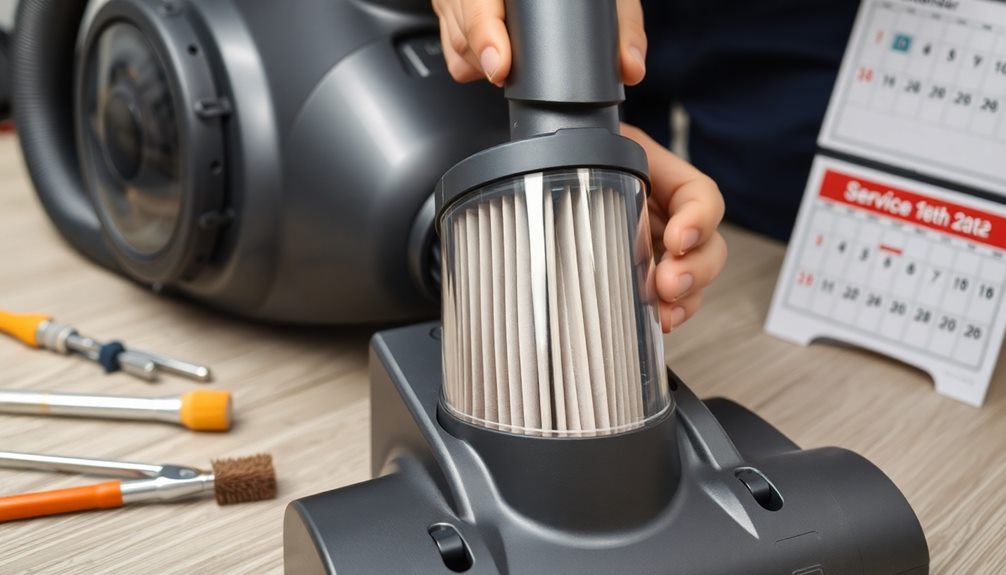
To keep your vacuum cleaner running smoothly, schedule regular servicing at least once a year. This practice guarantees your vacuum operates at peak efficiency and helps catch potential issues early.
Additionally, regular maintenance can be particularly beneficial for vacuum cleaners designed for pet hair, as they often accumulate fur and allergens more quickly. Best vacuums for pet hair can help you choose a model that meets your specific needs. Spring cleaning is a great time for this maintenance, preparing your vacuum for heavier cleaning demands throughout the year.
During servicing, focus on the following maintenance tips:
- Check the ducting for blockages.
- Inspect bristle length and replace if worn.
- Change the belt to prevent performance degradation.
- Use a shop vac or air compressor to clear out internal components and maintain airflow.
- Keep track of replacement parts that need attention.
Frequently Asked Questions
How Do You Use a Vacuum Cleaner Step by Step?
To use a vacuum cleaner, you select the right attachment, check the bag or bin, plug it in, adjust the height, and move it slowly across the surface, ensuring thorough cleaning with overlapping passes.
What Is the Maintenance of a Vacuum?
Vacuum maintenance involves regularly checking and cleaning filters, emptying bags, inspecting the roller brush, and replacing belts. You should also examine the vacuum's exterior and attachments for damage to guarantee peak performance.
How Do You Clean a Vacuum After Use?
After every cleaning, remember: "A stitch in time saves nine." You should empty the bin, wipe the exterior, clean the roller brush, check filters, and inspect attachments to keep your vacuum running smoothly.
What Should We Do First if We Want to Maintain the Vacuum Cleaner?
To maintain your vacuum cleaner, start by unplugging it for safety. Then, check the filter, bag, and roller brush for clogs or wear. Regular inspections help keep your vacuum running smoothly and efficiently.
Conclusion
By keeping your vacuum cleaner in top shape, you not only extend its lifespan but also guarantee it performs better, saving you time and effort when cleaning. It's true that a well-maintained vacuum can pick up more dirt, making your home healthier and fresher. So, take a few minutes to inspect for blockages, clean the filters, and adjust the height. You'll find that a little care goes a long way, making your cleaning routine more effective and enjoyable!
